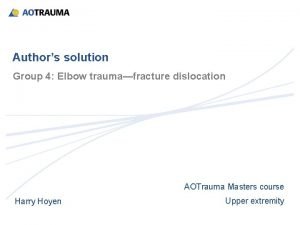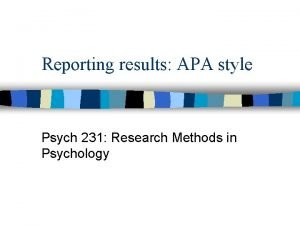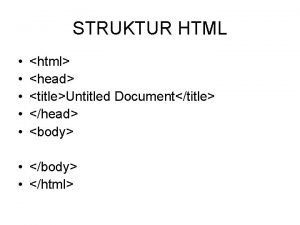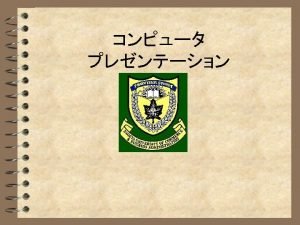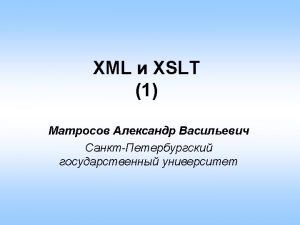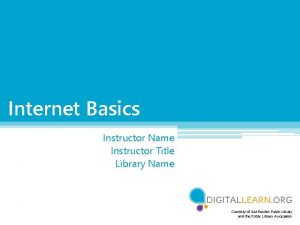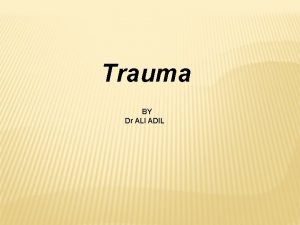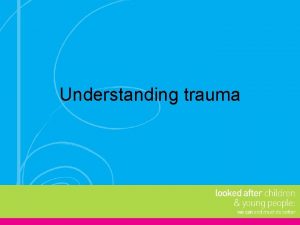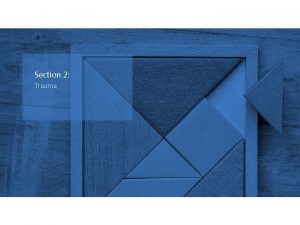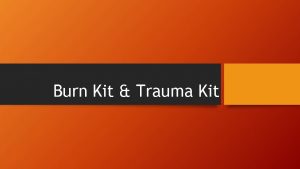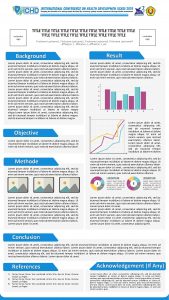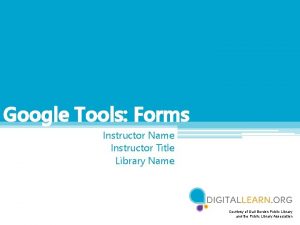HEAD TRAUMA 1 Instructor Name Title Unit HEAD

























- Slides: 25

HEAD TRAUMA 1 Instructor Name: Title: Unit: HEAD TRAUMA

OVERVIEW • • • Anatomy of skull and brain Pathophysiology of head injury Review of specific head injuries Assessment of head trauma Management of head trauma

HEAD INJURY • • Cause of death in 25% of trauma patients Cause of death in 50% of MVCs Significant long term disability Prompt recognition and treatment can improve outcome • All patients with head or facial trauma have c -spine injury until proven otherwise

ANATOMY

BRAIN INJURY • Brain injury results from: – Direct injury to brain tissue – External forces applied to outside of skull transmitted to the brain – Movement of brain inside skull

COUP CONTRACOUP • “ 4 collision” concept – Auto strikes tree – Head strikes windshield – Brain strikes inside of frontal skull – Brain rebounds and hits inside of occipital skull

PRIMARY vs. SECONDARY BRAIN INJURY • Primary injury is immediate from bruising or penetrating objects • Secondary injury is from hypoxia or perfusion of the brain – Caused by swelling, hypoxia, or hypotension – May be prevented by good patient care – Hyperventilation decreases perfusion of the brain tissue – Protect airway, give oxygen, maintain BP

HEAD INJURIES SCALP WOUNDS • Very vascular • Bleed briskly • Most scalp bleeding can be controlled with direct pressure

HEAD INJURIES SKULL INJURIES Courtesy Roy Alson, MD

SIGNS OF BASILAR SKULL FRACTURE Courtesy David Effron, M. D.

HEAD INJURIES BRAIN INJURIES • Concussion • Cerebral contusion • Diffuse axonal injury • Anoxic brain injury

HEAD INJURIES EPIDURAL HEMATOMA

HEAD INJURIES SUBDURAL HEMATOMA

HEAD INJURIES INTRACRANIAL HEMORRHAGE

ASSESSMENT RAPID TRAUMA SURVEY • Note LOC (AVPU), secure airway and protect c-spine • Assess breathing – Do not allow the patient to become hypoxic • Assess circulation – Control major bleeding – Prevent hypotension • Transport decision and interventions • Do brief neuro & GCS if altered LOC

ASSESSMENT DETAILED EXAM • Vital signs • SAMPLE history • Head-to-toe exam, including neurological and GCS • Further bandaging and splinting • Continuous observation

PUPILS

POSTURING

MANAGEMENT OF THE HEAD TRAUMA PATIENT • • • Stabilize the c-spine Secure and maintain the airway Ventilate at about 15 breaths/min. Prevent hypoxia Hyperventilate only patients with the herniation syndrome – Coma, BP, Respiration, bradycardia

HEAD TRAUMA AIRWAY CONTROL CANNOT BE OVEREMPHASIZED 19

MANAGEMENT • Record baseline exam – Neuro, GCS & pupils – Vital signs • Maintain good circulation – BP 110 -120 systolic • Continually monitor and record observations • Prompt transport

PITFALLS & PROBLEMS • Anticipate c-spine injuries • Protect the airway - prevent aspiration • Prevent hypoxia • Prevent shock – IV fluids and PASG are OK

PITFALLS & PROBLEMS • Be prepared for seizures • Rapidly deteriorating condition requires rapid hospital treatment • Assess for other causes of altered LOC – Hypoglycemia – Alcohol – Drugs

SUMMARY • Follow patient assessment • Protect c-spine, airway, and circulation • Record frequent vital signs, neuro, pupils, and GCS • Prompt transport

QUESTIONS?
 A 23 year old male experienced severe head trauma
A 23 year old male experienced severe head trauma Head trauma classification
Head trauma classification Name all the lines name all the segments name all the rays
Name all the lines name all the segments name all the rays Writing and completing reports and proposals
Writing and completing reports and proposals Title title
Title title Unit 6 review questions
Unit 6 review questions Apa introduction example
Apa introduction example How to shorten title for running head
How to shorten title for running head Title head
Title head .html?title=
.html?title= Head.php?index=
Head.php?index= Homepage title
Homepage title Html head body title
Html head body title Xml head
Xml head Slidetodoc
Slidetodoc Html head title
Html head title Html 구구단 테이블
Html 구구단 테이블 Html head title
Html head title Participante novato
Participante novato Tcole instructor course
Tcole instructor course Basic instructor course texas
Basic instructor course texas Basic instructor course tcole
Basic instructor course tcole Pepperball hotshot
Pepperball hotshot Not only the students but also the instructor
Not only the students but also the instructor Instructor vs teacher
Instructor vs teacher Cisco certified instructor
Cisco certified instructor

